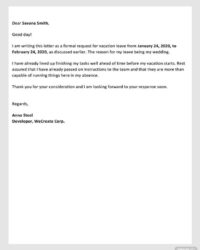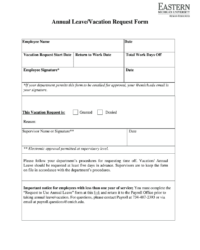Have you ever found yourself wishing there was a more engaging way to introduce complex ideas to your students? Traditional lecture-based methods often leave learners feeling passive, but what if there was a strategy that encouraged them to become active detectives, uncovering knowledge for themselves? That’s precisely what concept attainment, a powerful instructional model developed by Jerome Bruner, aims to achieve. It’s a dynamic approach where students analyze examples and non-examples to logically deduce the attributes of a specific concept, leading to a much deeper and more lasting understanding.
The beauty of concept attainment lies in its ability to foster critical thinking, problem-solving, and inductive reasoning skills. Instead of simply being told what a concept is, students actively construct their own meaning, which is far more impactful. For educators looking to implement this transformative method consistently and effectively, a well-structured framework is invaluable. That’s where a clear, intuitive concept attainment lesson plan template comes into play, providing the roadmap for successful and engaging learning experiences.
Unpacking the Power of Concept Attainment: Why It Works
Concept attainment is more than just a teaching strategy; it’s a profound shift in how students engage with new information. At its heart, it’s about presenting learners with sets of information—some that exemplify a concept (positive examples) and some that do not (negative examples). The students’ task is to compare and contrast these examples, formulate hypotheses about the concept’s defining characteristics, and then test those hypotheses against new data. This active process of discovery helps to solidify their understanding in a way that simply memorizing a definition never could. It’s truly learning by doing, but with a highly structured and purposeful design.
The genius of this method lies in how it mirrors real-world learning. Think about how we naturally acquire many concepts in life, like "democracy" or "justice." We don’t usually get a single, perfect definition handed to us; instead, we encounter various situations, analyze them, and gradually build our own nuanced understanding. Concept attainment brings this natural, investigative process into the classroom, making learning more authentic and meaningful. Students aren’t just absorbing facts; they are becoming skilled knowledge navigators, honing their analytical abilities with every example they encounter.
The teacher’s role in concept attainment is pivotal but distinctly different from a traditional lecturer. You become a facilitator, a guide, carefully curating the examples and non-examples, prompting students with insightful questions, and managing the discussion. It’s about creating a safe space for hypothesis formation and respectful debate, allowing students to test their ideas and learn from their peers. This collaborative environment fosters not only cognitive growth but also important social and communication skills.
One of the most significant advantages of concept attainment is its ability to reveal student misconceptions in real-time. As students vocalize their hypotheses, teachers can immediately identify where understanding might be faltering and provide targeted clarification or additional examples. This responsive teaching ensures that foundational errors are addressed before they become ingrained, leading to a more robust and accurate grasp of the concept. It also empowers students by giving them ownership over their learning journey, boosting their confidence as independent thinkers.
Key Steps in Facilitating Concept Attainment
- **Presenting Examples:** Begin by showing clear positive and negative examples, labeling them explicitly.
- **Hypothesis Formation:** Encourage students to brainstorm characteristics that define the positive examples and exclude the negative ones.
- **Testing Hypotheses:** Present additional examples, asking students to classify them based on their current hypotheses.
- **Concept Definition:** Guide students to articulate a clear, concise definition of the concept based on their findings.
- **Application:** Provide opportunities for students to apply their newly attained concept in new contexts.
Crafting Your Own Concept Attainment Lesson Plan Template
When it comes to putting this powerful strategy into practice, having a solid concept attainment lesson plan template is absolutely essential. It provides a structured framework that ensures you cover all the necessary bases, from carefully selecting your examples to planning for student interaction and assessment. A well-designed template helps you organize your thoughts, anticipate student responses, and maintain the flow of the lesson, making the entire process smoother and more effective for both you and your students.
Think of your template as your pre-flight checklist. Before your students embark on their discovery journey, you need to ensure you have everything prepared: the concept clearly defined in your mind, a rich array of positive and negative examples that truly illuminate its attributes, and a plan for how you will guide the discussion. This preparation is what transforms a good idea into a truly impactful learning experience. It allows you to focus on facilitating the dynamic classroom interaction, rather than scrambling to remember your next step.
A robust template will prompt you to consider not just the "what" but also the "how" and "why" of each lesson component. It encourages you to think critically about the potential misconceptions students might bring, and how you will address them. By planning out the sequence of examples, the types of questions you’ll ask, and the specific activities students will engage in, you create a seamless and purposeful learning trajectory. This meticulous planning pays off in a deeper, more enduring understanding for your students, fostering not just knowledge acquisition but also the development of critical cognitive skills.
Here are the key sections you’ll want to include in your own effective concept attainment lesson plan template:
- **Lesson Title & Concept:** Clearly state the concept students will be attaining (e.g., “Prime Numbers,” “Democracy,” “Figurative Language”).
- **Learning Objectives:** What will students be able to do/understand by the end of the lesson?
- **Prior Knowledge/Pre-assessment:** What do students already know, and what might they struggle with?
- **Positive Examples:** A carefully chosen list of items that are clear instances of the concept.
- **Negative Examples:** A carefully chosen list of items that are clearly *not* instances of the concept.
- **Teaching Sequence/Procedure:**
- Presentation of examples (Yes/No categories).
- Student hypothesis formation and discussion.
- Testing hypotheses with new examples.
- Formal concept definition.
- **Materials:** Any resources needed (cards, images, text excerpts).
- **Assessment:** How will you gauge student understanding of the concept?
- **Differentiation:** How will you support diverse learners?
Implementing concept attainment lessons, especially with the aid of a well-designed template, can dramatically transform your classroom into a vibrant hub of discovery. It shifts the focus from passive reception to active construction of knowledge, empowering students to become genuine investigators. This approach not only deepens their understanding of specific content but also hones essential thinking skills that will serve them far beyond the classroom walls.
By embracing this inductive learning strategy, educators can foster a classroom culture where curiosity thrives, and critical thinking is a daily practice. Watching students light up as they uncover a concept for themselves, rather than just being told about it, is one of the most rewarding experiences in teaching. It truly instills a love for learning and equips them with the tools to navigate a complex world.


